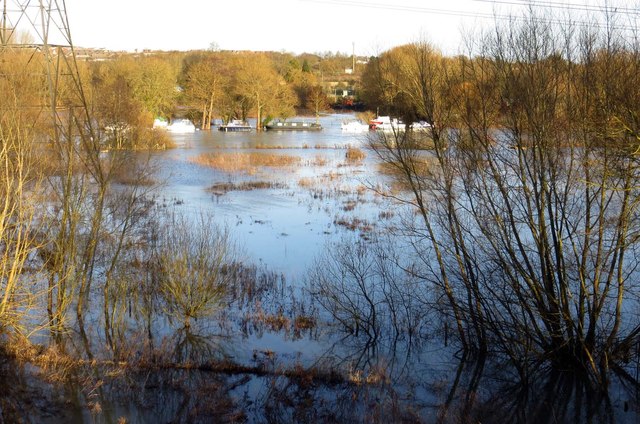In my previous post, I discussed the challenges of reducing non-CO2 greenhouse gas (GHG) emissions from agriculture and identified some of the strategies that are available or under development to allow farmers to reduce these emissions. But by how much would these strategies reduce projected emissions? What is the potential magnitude of the emissions reduction we should expect from agriculture in the coming decade? As in the previous post, I deliberately exclude a discussion of the potential to offset these emissions through land management and land use change although, as we will see, some insights into the potential to reduce emissions in the LULUCF sector will be covered in this post.… Read the rest
Commission’s 2030 Climate Target Plan proposes radical changes in the rules governing agricultural and land GHG emissions
In my post in March 2020 on EU climate policy and agriculture, I highlighted the limited expectation among Member States in reporting their projected greenhouse gas (GHG) emissions to the European Environment Agency (EEA) to make significant reductions in agricultural emissions by 2030.
Given the greater climate ambition set out in the European Green Deal and the Farm to Fork Strategy, I argued that, to properly incentivise, motivate and track progress in the farming sector, a focus on agricultural emissions alone is misleading and should be supplemented by also considering changes in land use emissions and removals that are under the control of farmers.… Read the rest
Climate measures in agriculture
The need and opportunities to accelerate the reduction in agricultural greenhouse gas (GHG) emissions have been underlined in a number of recent reports (see, for example, the IPCC Special Report on Climate Change and Land (2018) or the IEEP report Net-Zero Agriculture in 2050: How to Get There (2019)). Following a period from 1990 to 2012 with a steady decrease in EU agricultural emissions amounting to 22% in total, these emissions have begun to increase since then, growing by 4% over the 2012-2017 period.
In this post, I examine the projected trend in agricultural emissions to 2030, drawing on the most recent European Environment Agency (EEA) report on Trends and Projections in Europe 2019 as well as the inventory of policies and measures that Member States have taken or plan to take to reduce these emissions in future.… Read the rest
The Commission’s Climate Law proposal: what it says and how it might be improved
On 4 March 2020 the Commission published its draft Climate Law, formally a Regulation to establish the framework for achieving climate neutrality. This legislation had been flagged in incoming Commission President von der Leyen’s Political Guidelines published prior to the ratification of her nomination by the European Parliament.
It was confirmed in the Commission’s Communication on the European Green Deal in December 2019 with the stated aims to set out clearly the conditions for an effective and fair transition, to provide predictability for investors, and to ensure that the transition is irreversible. It would also ensure that all EU policies contribute to the climate neutrality objective and that all sectors play their part.… Read the rest
Greenhouse gas emission targets and Irish agriculture
Ireland faces a huge challenge in reducing its greenhouse gas emissions in the coming years. Taoiseach (Irish Prime Minister) Enda Kenny got into hot water last week for apparently saying one thing in his official speech to the Paris COP21 climate conference and another thing in unscripted remarks to journalists afterwards. Much of the subsequent controversy during the week revolved around the Irish government’s attitude to agricultural emissions and whether it was seeking special favours for the Irish agricultural sector in the current negotiations on setting national emissions targets for the period to 2030 in the framework of the EU’s 2030 Climate and Energy Package.… Read the rest
Including LULUCF in the EU’s 2030 climate policy target
Today, Thursday 18 June, is the closing date for the Commission’s consultation on addressing greenhouse gas emissions from agriculture and land use, land use change and forestry (LULUCF) in the context of the 2030 EU climate and energy framework. The consultation will be followed by a Commission proposal in the course of next year (2016). This proposal will be a very significant initiative, and will have large implications for land use within the EU, as well as determining the severity of member state mitigation targets under the Effort Sharing Decision (ESD) to 2030.
Background
In 2012, agricultural non-CO2 emissions amounted to 10.3% of total emissions in the EU.… Read the rest
Levelling the playing field for land-based enterprises in Ireland
Ireland faces particular challenges in meeting the EU’s 2030 member state climate targets when these are set as part of a new Effort Sharing Decision in the next few years. The overall target agreed at the European Council meeting in October 2014 for the sectors not covered by the EU’s Emissions Trading Scheme is a reduction of 30% by 2030 compared to 2005, with individual member state targets differentiated between reductions of 0% to -40%. Ireland’s 2020 target is a reduction of 20% over 2005 levels.
Ireland’s overall 2030 target for the non-ETS sectors will be set partly on the basis of its relative GDP per capita but also taking account of the high share of agricultural emissions (around 45%) in its non-ETS total.… Read the rest
An agricultural perspective on the European Council 2030 climate and energy framework conclusions
The European Council agreed on a set of climate and energy targets for 2030 (the 40/27/27 package) at its meeting last month. The agricultural sector has a particular interest in these conclusions given that it is affected by climate change targets in three different ways:






